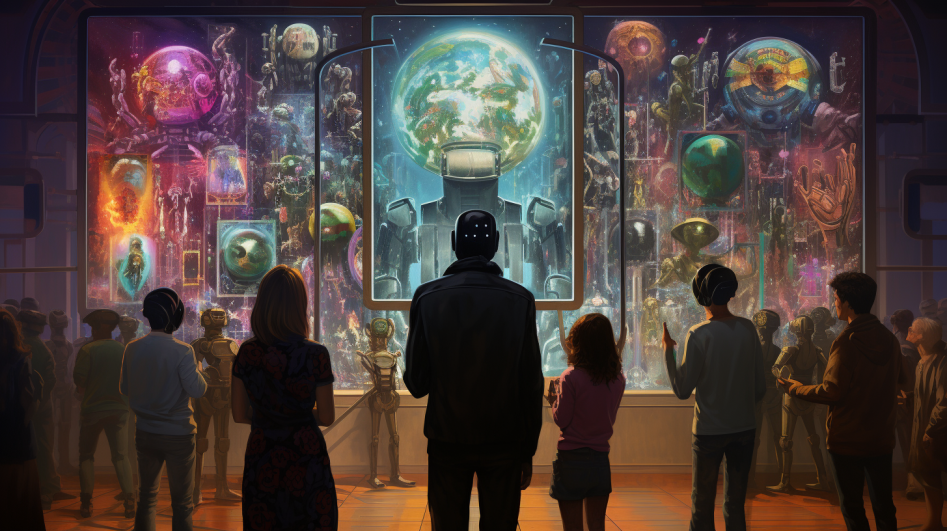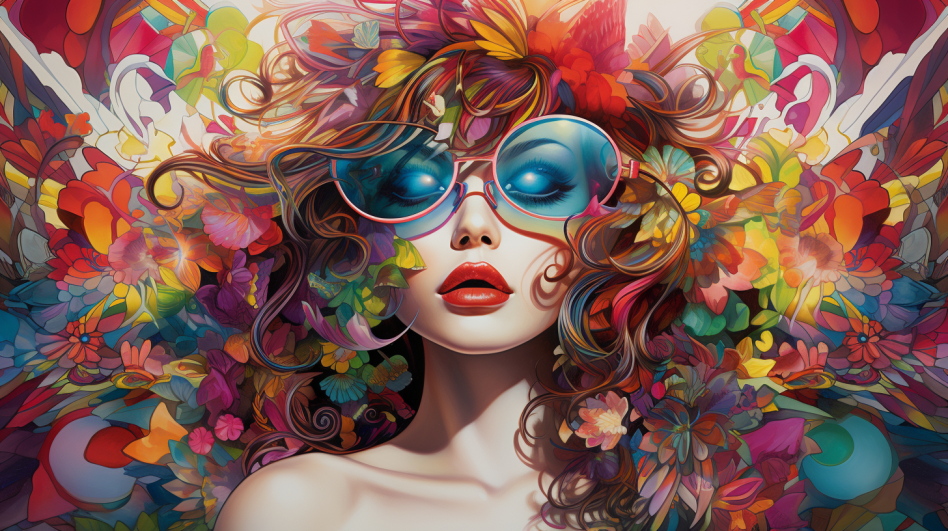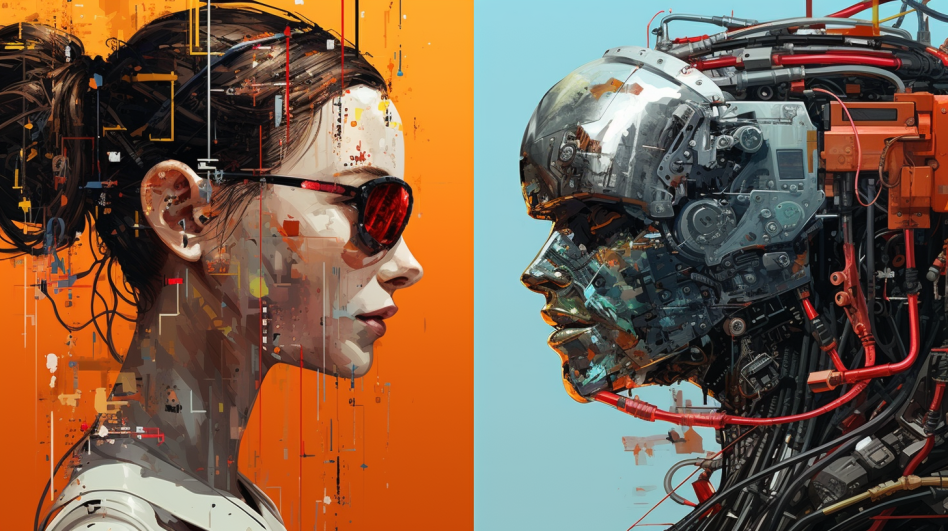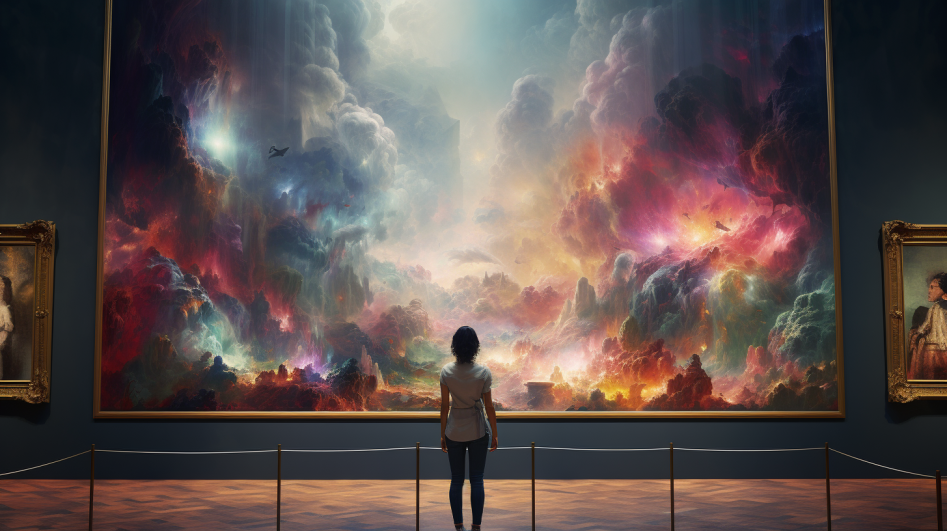The Art of The Future: How AI Is Shaking Things Up and Why It Matters
Are you quick to dismiss AI-generated art as "what the kids are into these days"? Think again!

If you're here, you're probably wondering (like many of us these days), "Are we actually taking AI-generated art seriously?" Well, kind of. Although you might be tempted to view it as a futuristic fad and nothing more, AI-generated art is more than just a blip on the radar.
Remember the Portrait of Edmond de Belamy? It made its way to Christie's auction house, fetching a staggering $432,500 in 2018. Or artist Boris Eldagsen, refusing the prize he won at the Sony World Photography Awards after he revealed an AI model created his photo.
Whether you like it or not, AI is reshaping the way we interact with and experience art. It's inviting us to question the essence of creativity and the role of technology in it.
Let’s Chat About This AI Art “Nonsense”
It’s 2023. AI is not some sci-fi tech from a dystopian novel (as much as some people make it out to be). In reality, it’s less about creating disorder and more about bridging gaps. It's a bit like adding a new color to the rainbow. It doesn't replace the existing hues but adds depth and diversity to the spectrum.
Yes, it will take some time to get used to, but seeing AIs learn and produce better output each time is freakin’ fascinating. Imagine machine learning as a toddler learning about colors. You show it a blue object and say, "This is blue," and you do that thousands of times with different shades of blue. Eventually, it will recognize blue even if it sees it in a different context. That's machine learning in a nutshell - it's all about pattern recognition and making predictions.
Then you have neural networks. They take inspiration from our brain's structure - you know, the gray, squishy thing that lets you enjoy a Van Gogh. These networks consist of layers of nodes (digital neurons, if you will) that process information and learn complex patterns. Similar to how we learn to recognize faces, understand speech, or appreciate art.
Now, to the pièce de résistance of AI art: Generative Adversarial Networks, or GANs. Think of GANs as an art contest between two AI systems. One AI (the Generator) creates a piece, and the other AI (the Discriminator) critiques it. The Generator keeps creating, learning from the Discriminator's feedback, until it produces a piece that the Discriminator can't distinguish from a human-created artwork. Et voila! Now we have photos that sell for ludicrous prices at auctions and win recognized awards.
AI’s Impact On The Art Scene
Fast-forward to the present, and AI is doing more than just recreating art – it's generating unique pieces that change the realm of creativity. Have you seen what Midjourney can do? I mean…

But what does this translate to? Is it out with the old artists and in with the new silicon ones? Of course not.
In a way, AI has become a new brush for creators to experiment with. It's enabling artists to explore new avenues of creativity, breaking down traditional methods. It's not replacing but augmenting them, much like how the synthesizer didn't replace musicians but expanded the realm of music.
AI is also changing the face of art distribution. With AI, art is no longer confined to galleries and exclusive auctions. Digital art can be created and shared with a global audience, transforming the ivory tower of the art world into a global art community.
The Debate: Cool Innovation or Controversy Fuel?
Now, what's a new frontier without people being annoyed about it? AI-generated art has sparked its fair share of debates, pushing us to question the very foundation of creativity.
Firstly, there's the question of authorship. If an AI creates a piece of art, who's the artist - the AI, the programmer, or the data that trained the AI? It's a bit like asking, "Who painted the picture - the brush, the artist, or the inspiration behind the art?" This debate stretches the bounds of what we traditionally understand as an 'artist,' and, frankly, it's a tough riddle t0 solve.
Then there's the issue of originality. If AI learns from existing art to create new pieces, how original is it? To frame it differently, is AI creating art or merely remixing it? Suddenly, the line between homage and plagiarism is getting as blurry as ever.
And let's not forget about the impact on value and perception. If an AI can churn out a thousand pieces a minute, what does that do to the value of art? Is a digital piece by an AI as valuable as a physical painting by a human artist? Some would say it's comparing apples to trees, but it's a discussion that's hard to escape.
AI-generated art has also ventured into the thorny territory of legal debate. Remember the monkey selfie copyright dispute? Well, strap in for AI's version of it. As it stands, copyright law struggles to wrap its head around the concept of non-human creators, leaving a question mark over who owns the rights to AI-generated art.
The talk around this subject is complex, multilayered, and far from resolved. But that's the beauty of it, if you ask me. It's pushing us to question, explore, and redefine our understanding of art and creativity.

What Twists Can We Expect Next?
One trend to watch out for is personalization. Picture this: An AI that understands your tastes so well, that it can create unique pieces tailored to your aesthetic preferences. It’s like having a personal artist at your disposal, creating bespoke art just for you.
Interactivity may be another exciting frontier. AI can potentially create art that responds to its audience, changing its form based on viewer reactions. Think of art pieces that evolve with you, resonating with your mood or ambiance. It's not just about looking at art –it's about experiencing it.
However, the future is certainly not without its challenges. The democratization of art through AI raises concerns about oversaturation. With everyone being able to create and share art, how do we sift through the noise? And as AI-generated art becomes more mainstream, how do we protect the rights of creators and ensure fair recognition and compensation?
The key here lies in collaboration - between artists, technologists, legal experts, and the art audience. Together, they can ensure that the AI revolution enhances the art world, fostering innovation while preserving the integrity and spirit of artistic expression. At least for the time being. Who knows what horizons will AI conquer next...

